If it’s your first trek in Nepal, you are probably considering one of the classic routes. If so, I bet you ask yourself a question: Everest Base Camp or Annapurna Circuit – which trek should I choose?
These two treks are the most popular routes in the Himalayas for a reason. In both cases, the scenery is breathtaking. Most of the time, you are surrounded by the highest mountains in the world – the snow-capped peaks of the Himalayas. In addition, no matter which option you choose, extensive infrastructure makes planning easy, even if it’s your first multi-day high-mountain hiking adventure. In short, the choice is not easy at all.
Before my first solo trek in Nepal, I spent hours studying pros and cons of both treks. However, I am aware that not everyone has the time and patience for this. That’s why I decided to share my experience, hoping it will make your choice easier.
In this blog post you will find:
- all the questions I had asked myself before my first trek and;
- all the answers I got only after completing both treks.
At the end of each paragraph, representing one of the questions, you will find the answer which trekking route is a better option in this particular case. The winner gets one point. At the end of the article, you will find out the overall winner and know if you should head to Everest Base Camp or the Annapurna Circuit. Hopefully, this detailed comparison will help you to make the right decision.
What's in this blog post?
1. Which trek is easier to prepare for?
1.1. Everest Base Camp and Annapurna Circuit: body training
In terms of preparation, there is no difference between the two. You should train your body, especially if you plan to carry your backpack yourself. Going for long walks, hiking up the stairs instead of taking the elevator will be very helpful if you don’t exercise too much. I’ve started jogging because of my trekking plans. Consequently, my general fitness improved.
1.2. Everest Base Camp and Annapurna Circuit: packing
The packing list is practically the same. I went for both treks with the same gear as the weather conditions, altitude and route length are quite similar. In both cases, the same travel insurance covering trekking up to 5,500 m above sea level is required.
To read about the packing tips as well as the essential packing list for trekking the Himalayas go to WHAT TO PACK FOR A TREK IN NEPAL?
1.3. The winner
Regardless which trek you choose, body training as well packing do not change. Thus, we have a first tie.
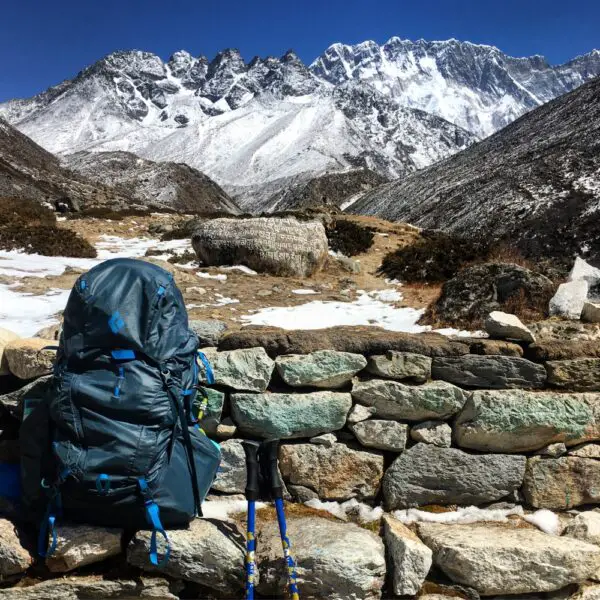
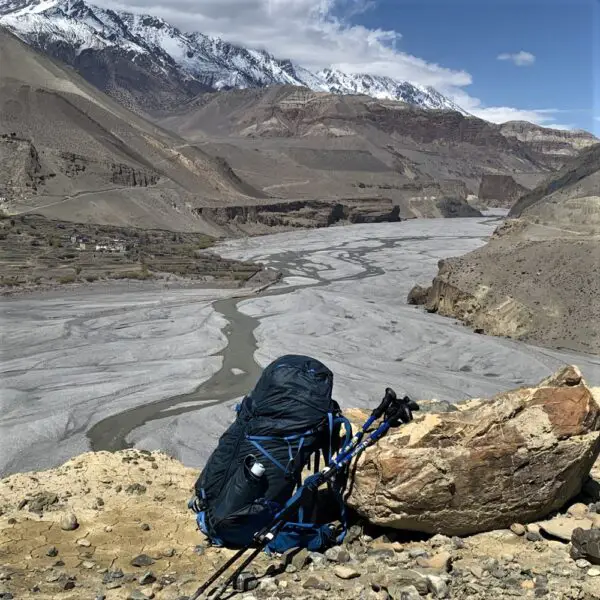
Everest Base Camp vs. Annapurna Circuit
1:1
2. What is the minimum number of days required to complete the treks?
Your vacation length is a very important factor when planning a trek, isn’t?
2.1. Everest Base Camp
As regards the EBC trek, if you choose the most popular option and take the flight to Lukla to start the trek, usually a minimum of 12 days is required. This includes: air travel time from Kathmandu to Lukla and back, the actual trek and 2 acclimatization days recommended to get your body used to the thinner air at higher altitude.
To read about the detailed EBC trek itinerary check out my blog post “EVEREST BASE CAMP TREK – DAY BY DAY ITINERARY”.
2.2. Annapurna Circuit
When it comes to the Annapurna Circuit trek, the answer is a bit more complex. The newly built road as well as the proximity to the Jomsom airport allow you to cover a large part of the route by bus, jeep or even by plane. Therefore, the minimum number of days is 9, which is a bit extreme though, as you’ll end up spending 4 days of your adventure watching the mountains through the bus’ window – not for me, thanks :). Thus, the recommended minimum number of days ranges from 12-16. This time includes: travel from Kathmandu to the starting point and back, the actual trek and the acclimatization days.
To read about the detailed Annapurna Circuit trek itinerary you can check out my blog post “ANNAPURNA CIRCUIT TREK – DAY BY DAY ITINERARY”.
2.3. The winner
If you have limited time, the Annapurna Circuit might be a better choice, given the multiple transportation options which makes your planning a bit more flexible. During the trek most of the time you can jump on the jeep or bus to return to civilization. You need to take into consideration however, that walking the entire legendary route around Annapurna will not be possible, if you have less than 16 days.
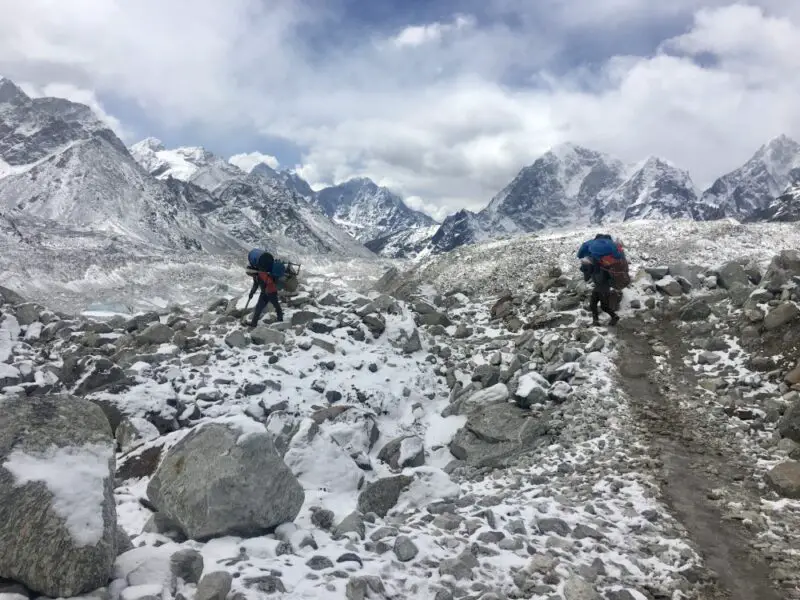
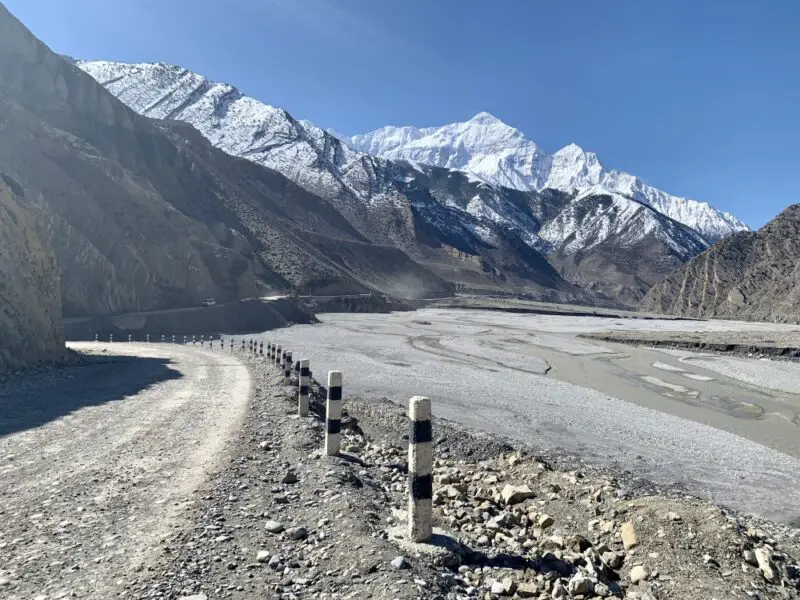
To sum up, regardless of the trek you choose, you need to always remember to have an extra day or two when planning your adventure. I know it’s easier said than done as every single day of your holidays is precious – especially when you’re planning your annual leave. But trust me; you will not regret it. You must always keep in mind that high mountains adventures are often unpredictable due to the weather and the required acclimatization time and you are just about to embark on a journey in the highest mountains in the world!
Everest Base Camp vs. Annapurna Circuit
1:2
3. How hard is it to get to the starting point of the treks?
3.1. Everest Base Camp
In order to reach the Everest Base Camp, most people take a short but very scenic 30-minute flight from Kathmandu to Lukla. At first glance, the solution seems very good. In fact, flying to Lukla was hassle-free for me. Unfortunately, it’s not always that easy. When planning your trip, you must know that flights to Lukla take place only in the early morning and only in stable weather conditions, which is not something to be taken for granted at high altitude. As a matter of fact, Lukla is located at almost 3,000 m above sea level. Flights are often cancelled due to dense clouds, strong winds and snowfall. As a result, delays can be significant. Sometimes flights might be resumed only after several days. Now you start understanding why I mentioned having a few extra days when planning, don’t you?
Besides, you also probably already heard that Lukla airport is often considered the most dangerous airport in the world due to its very short runway given the limited space. Even though only very small planes are permitted to fly to Lukla, such a short runway leaves a tiny room for pilot’s error. If you are afraid of flying, you’ll not like it at all. However, when planning your EBC trek try not to think about this too much as statistically speaking flying is the safest way of travelling.
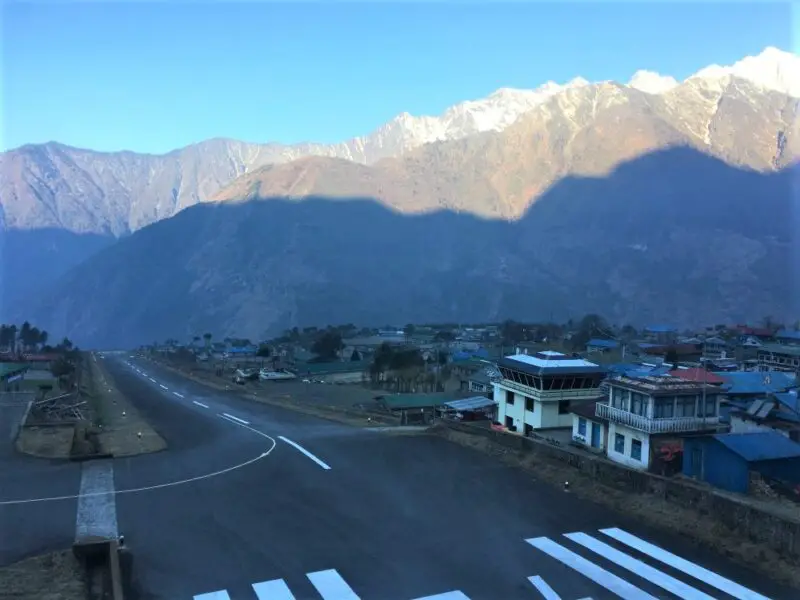

On the other hand, you can also reach Lukla by land, but this will extend the trek duration by a minimum 4 days. You will need to first take the bus to Jiri or Shivalaya and from there start your trek.
3.2. Annapurna Circuit
Besisahar, which is situated between Kathmandu and Pokhara, is the starting point of the Annapurna Circuit trek. It can be reached from Kathmandu by bus or minibus. It took me 7 hours to get there by local minibus. Although travelling by public transportation in Nepal is definitely an unforgettable experience, the comfort of the journey is never the highest. If that could be a problem for you, it’s probably better to rent a private car with a driver instead.
From Pokhara to Besisahar it takes a bit less – 5 hours by bus, however you need to first get to Pokhara in this case. If your time is limited, I’d suggest going from Kathmandu directly instead of travelling via Pokhara. You can always visit Pokhara after your trek, provided all goes as planned and you still have time. Without a doubt it’s a great place to chill after all the hardships of trekking.
To learn more about how to get to Besisahar check out my blog post “ANNAPURNA CIRCUIT – PRACTICAL GUIDE TO PLAN YOUR TREK”.
3.3. The winner
Overall, I think it’s easier to get to the starting point of the Annapurna Circuit as the transportation options are more reliable.
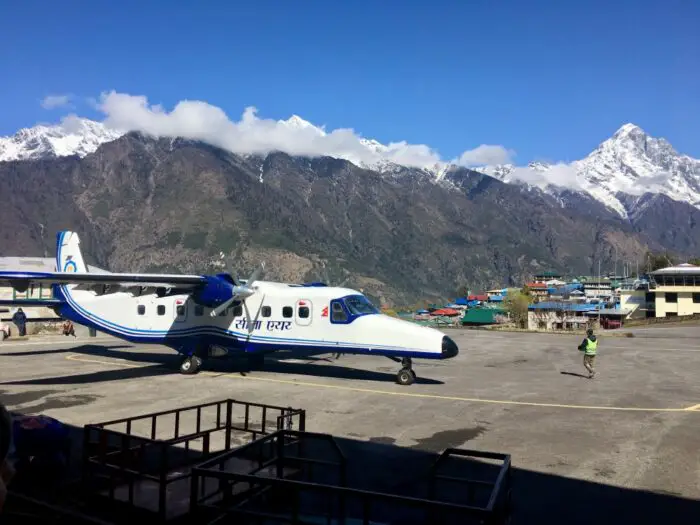
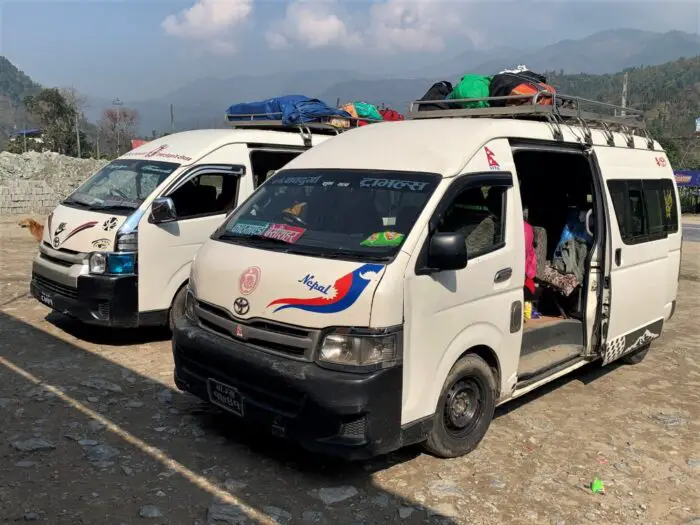
Everest Base Camp vs. Annapurna Circuit
1:3
4. Which trek is less physically demanding? Overall difficulty level and safety.
In terms of the highest point you will reach, both treks are similar. The Everest Base Camp lies at the altitude of 5,364 m, whereas the highest point on the Annapurna Circuit trek – Thorong La Pass – is situated only 52 meters higher – at 5,416 m.
4.1. Everest Base Camp
As regards the altitude sickness risk, it seems slightly higher if you choose the EBC trek. If you take a direct flight to Lukla, the acclimatization will be more difficult. In addition, half of the route (6 out of 12 days) you’ll walk above 4,000 m. In short, you will spend more time on the highest altitudes.
4.2. Annapurna Circuit
On the other hand, if you cover the first part of the Annapurna Circuit by jeep, you will also end up high very quickly. Regardless of how you cover this initial part of the route (I hope on foot 🙂), Annapurna Circuit is easier in terms of altitude, and therefore also safer. This is because the route takes you above 4,000 m only for 3 days.
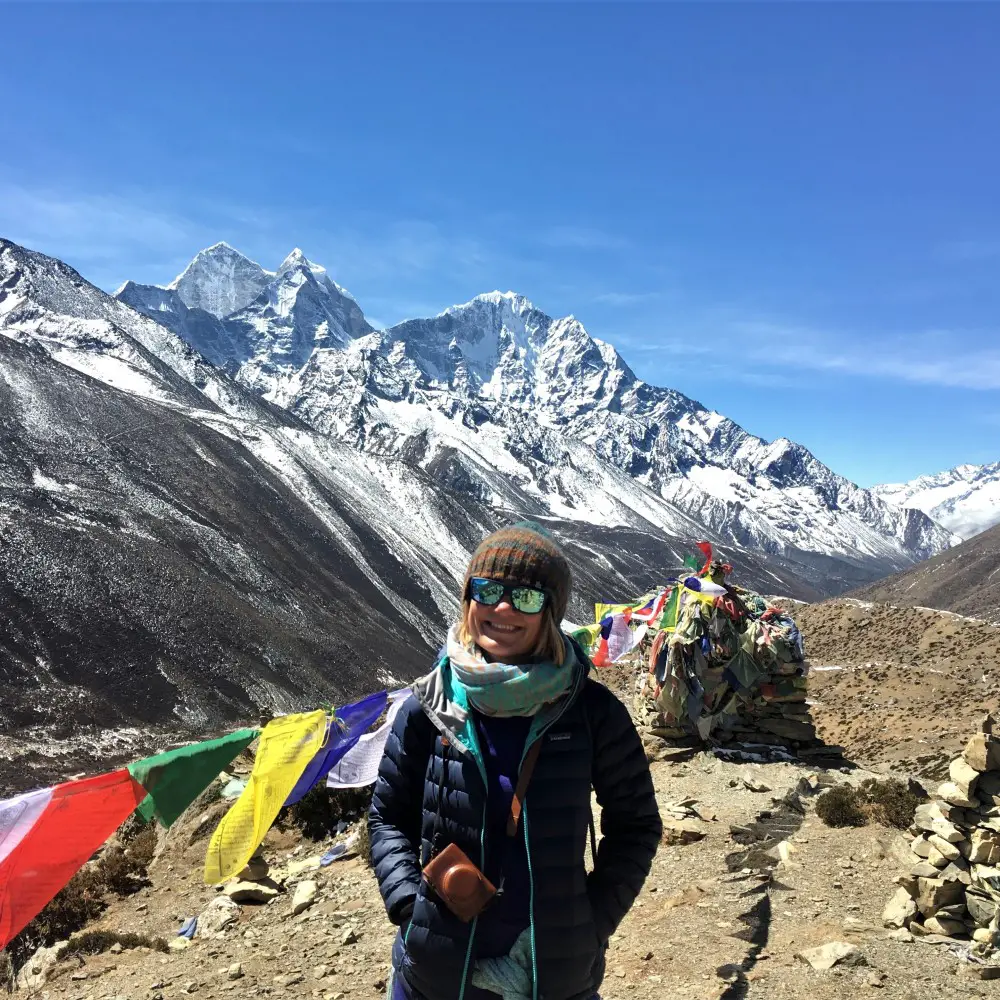
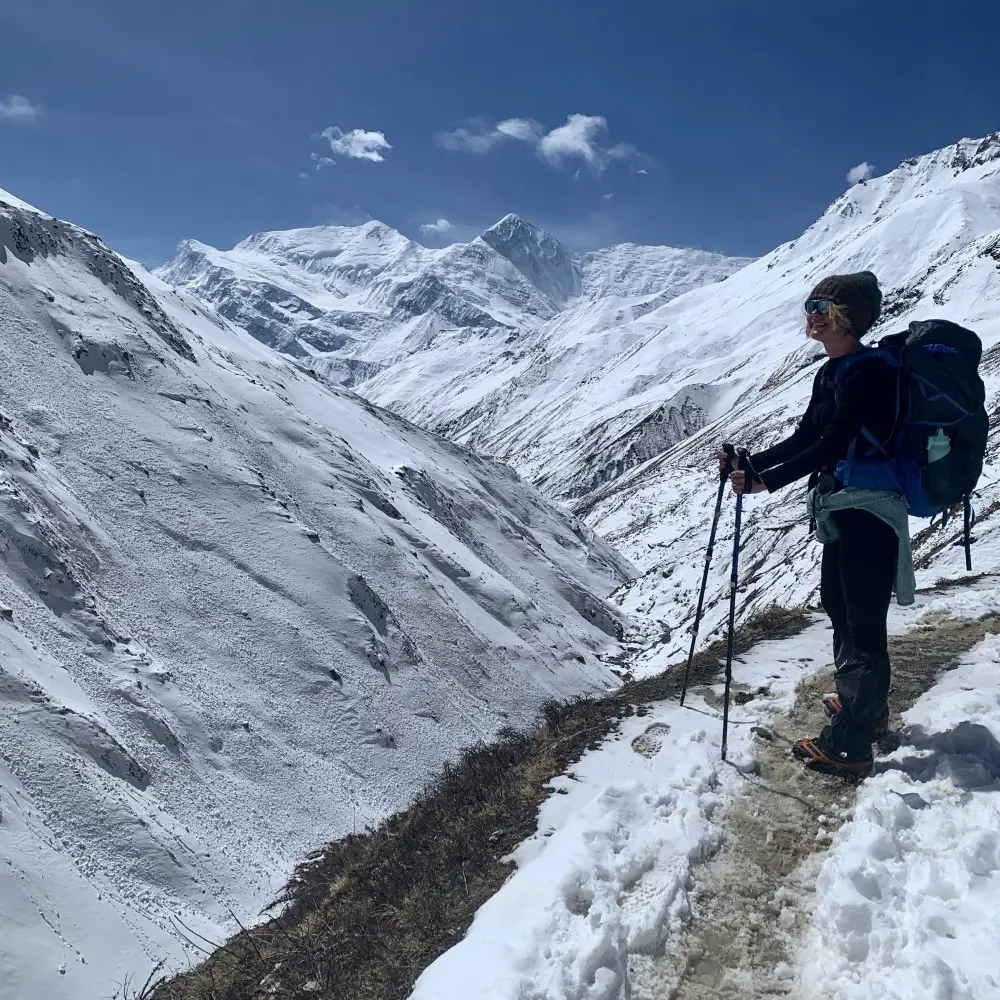
To clarify, high altitude should not be associated with altitude sickness immediately. If you take the time to properly acclimate your body, you shouldn’t have any issues. Nevertheless, higher altitude means less oxygen in the air, which makes breathing more difficult. A step taken at higher altitudes is always more difficult than in the lowlands.
4.3. The winner
Both treks require no technical expertise or mountaineering skills. The paths are wide and safe to walk on. The Everest region is more remote than Annapurna’s area, as no road connects it. However, in case of emergency, helicopter rescue can be arranged from both regions. You just need to make sure before the trek that the insurance covers this kind of scenario as otherwise you may end up paying a very expensive bill.
To sum up, the risk of altitude sickness is higher during the EBC trek. Moreover, the return to “civilisation” is easier from the Annapurna than from the Everest region as travel by land is possible thanks to the road. Overall, the Annapurna Circuit is a slightly easier and safer trek.
Everest Base Camp vs. Annapurna Circuit
1:4
5. Which trek is cheaper? The cost of the treks.
The cost of the trek depends mainly on a few factors: permits, transport, accommodation and food as well as any additional expenses. Let’s look at it one by one.
5.1. Everest Base Camp and Annapurna Circuit: permit cost
The permit cost is similar. In both cases, it is 5,000 NPR (just over USD 40). To enter the Everest region Sagarmatha National Park and Khumbu Pasang Lhamu Rural permit, which replaced the TIMS card in 2018, is required. Meanwhile for Annapurna Circuit you’ll need TIMS and ACAP permits.
5.2. Everest Base Camp and Annapurna Circuit: transport cost
The transportation costs will depend on how you decide to travel. On both treks, you can save money if you go by local bus. However, if the most popular options are taken into consideration – a flight to Lukla for the EBC trek (at least 150 USD one way) and a bus journey to Besisahar and back to Kathmandu for Annapurna trek (less than 10 USD one way) – then the latter is a cheaper but of course less comfortable option at the same time.
5.3. Everest Base Camp and Annapurna Circuit: accomodation and food cost
When it comes to accommodation expenses, the things are clear. In short, the Everest Base Camp trek is more expensive. The price for a room was always fixed and never negotiable during my EBC trek. It usually amounted to 500 NPR for a night in a double room (~USD 4).
In contrast, in the first part of Annapurna Circuit the prices are lower. If you order the meals in the lodge where you’re staying, which is a normal practice in Nepal, you might end up having a room for free. The double room price for one night was usually around 200 NPR (~USD 1.7). However, after crossing the Thorong La Pass, the cost of accommodation is relatively higher. You are unlikely to pay more than 500 NPR though. In general, accommodation prices are more flexible and negotiable in the Annapurna region. Food prices are also relatively higher on the Everest Base Camp trek.
Nothing happens without a reason though. Prices in the Himalayas increase with the altitude, and the trek to the Everest Base Camp on average brings you higher.
5.4. Everest Base Camp and Annapurna Circuit: additional expenses
Fees for hot shower and phone charging should be considered as extra expenses during the EBC trek. The price will depend on the altitude and range from 200 – 1000 NPR (~1.7 USD – 8.5 USD). Whereas such services in the Annapurna region are usually free.
5.5. The winner
In summary, how much you spend depends on choices you make. However, better comfort always comes with a higher price. Undoubtedly, the average cost of the Annapurna Circuit trek is a bit lower though.
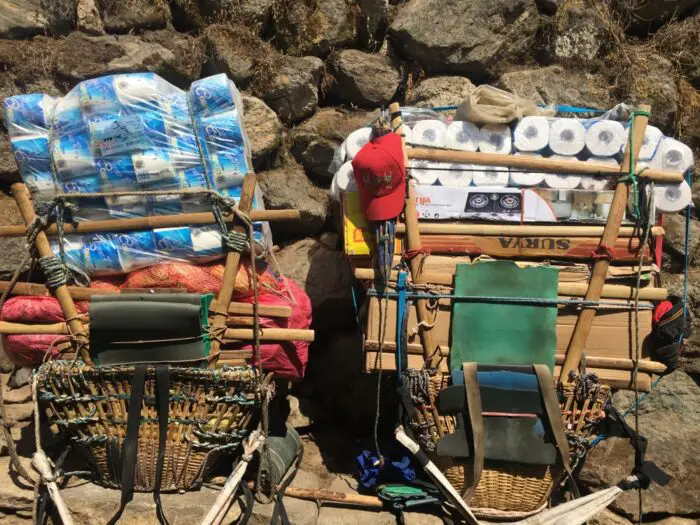
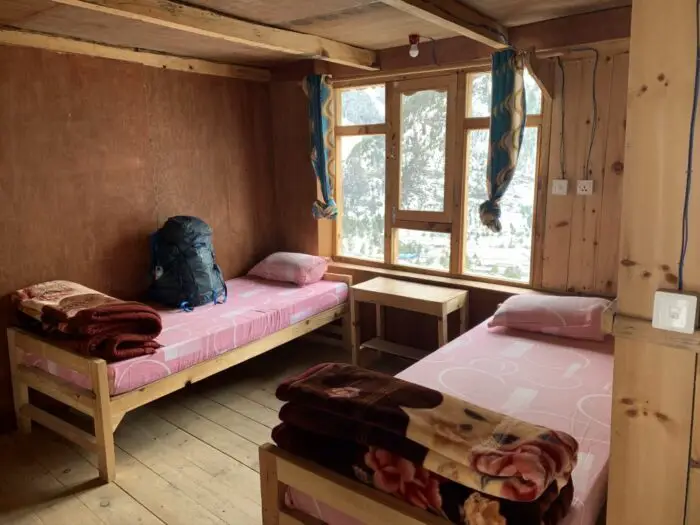
Everest Base Camp vs. Annapurna Circuit
1:5
6. Which trek is more beautiful? The scenery.
That’s the most difficult part for me to assess objectively.
If you are not a professional climber, you probably can’t get closer to the highest mountains than when trekking to the Everest Base Camp. The scenery is very dramatic. On the other hand, the views as well as the climate and culture during the Annapurna trek tend to be more varied, making it a slightly more complex Himalayan experience.
6.1. Everest Base Camp
Reaching the world’s highest mountain base camp is the final goal of the EBC trek. For that reason some will not need more explanation than that. In case you do, you should know that there are plenty of attractions on the way as well.
Firstly, the Everest Base Camp trek goes through the beautiful Sagarmatha National Park. Secondly, you will come across many interesting sites: Namche Bazaar – a charming Sherpa village with narrow cobblestone alleys, beautiful Buddhist monasteries, magical white stupas and a hidden yeti skull. 😉 In addition, one of the most characteristic and beautiful mountains in the world – Ama Dablam, as well as the majestic south face of the fourth highest mountain in the world Lhotse (8,516 m) and the famous Khumbu glacier will be your frequent companions during the EBC trek.
6.2. Annapurna Circuit
The epic Annapurna Circuit trek has been often considered as the most beautiful trek in the world, not without a valid reason. Above all, its landscape is very diverse.
The trek leads initially through subtropical forests and authentic villages just to reach the spectacular and often snowy Thorong La Pass. After crossing the pass, you will have a chance to visit the Muktinath temple – a mystical pilgrimage destination for both Hindus and Buddhist. In particular, the surroundings of the huge Buddha statue, located in the temple complex are breathtaking. Eventually, you will walk through the remote and arid Lower Mustang region, which due to its dry climate reminds of the mysterious land of Tibet. Moreover, you’ll pass through the deepest gorge in the world – Kali Gandaki Gorge as well as apple orchards. Ultimately the trek route encircles the Annapurna Massif, passing two other eight-thousanders – Manaslu (8,163 m) and Dhaulagiri (8,167 m).
The only downside to this trek is the jeep road that goes through most of the original trail and, I guess, that the clouds of dust behind the jeeps passing by are not what you came to the Himalayas for. Thankfully, because of that, many alternative trails have been created in recent years. Thus, trekking in nature is still possible.
6.3. The winner
Frankly speaking, both routes are incredibly beautiful and uniquely charming. It’s impossible for me to say which one I like more. It’s not that helpful, is it? 🙂 Well, we have a second draw.
Everest Base Camp vs. Annapurna Circuit
2:6
7. Which trek to choose to be more comfortable? Food and accomodation options.
Both treks are extremely popular, not only because of the stunning beauty of the Himalayas, but also because of how easy they are to organize. In other words, you never have to worry about your accommodation as there are plenty of lodges in each village you pass. The variety and quality of the food, taking into account the altitude and conditions in which local people live, is truly remarkable. At an altitude of over 4,000 m, you can order not only delicious local dishes but pizza, spaghetti and burgers as well.
7.1. Everest Base Camp
In terms of the food options, the Everest Base Camp trek might be slightly better as you will also find fantastic bakeries and decent coffee places in some of the villages on the way. In addition, when trekking to the EBC you will have a chance to watch movies (yes, you read it right – there are Himalayan mini movie theaters), which sometimes are shown in the restaurants. As if it was not enough, on the way back from the base camp, your successful expedition can be celebrated in one of the cosy pubs. Yes, the Everest Base Camp trek is an extremely friendly option for people who love not only the mountains, but also life’s simple pleasures. 🙂
7.2. Annapurna Circuit
On the other hand, on the Annapurna Circuit, the standard of accommodation is higher. Rooms often have private bathrooms and hot showers are quite frequent. During my EBC trek, I didn’t shower for a week, whereas in the Annapurna region I washed in hot water almost every day!
7.3. The winner
There is no clear winner, therefore the third draw.

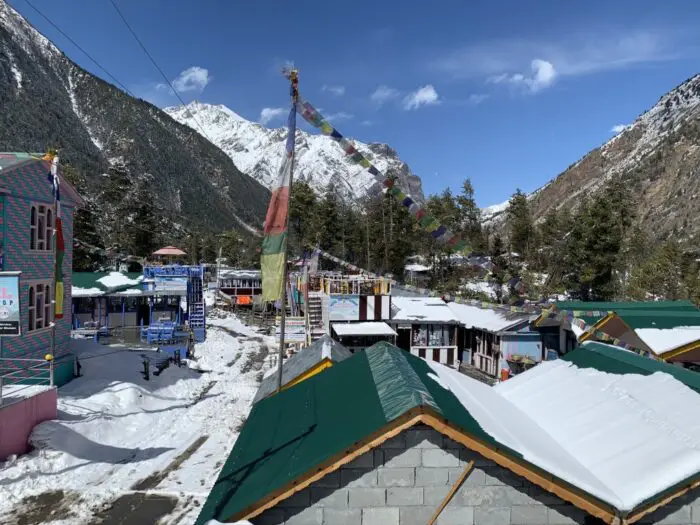
Everest Base Camp vs. Annapurna Circuit
3:7
8. Which trek is less crowded and you will have more mountains just for yourself?
8.1. Everest Base Camp and Annapurna Circuit: number of trekkers
In both cases, it will primarily depend on the season in which you decide to trek. During the best trekking season in Nepal (October-November, March-April), both routes will be crowded. Hovewer, from my own observations and research, it seems that the EBC trek is slightly more popular, especially among larger trekking groups. The fame of Mount Everest is definitely bigger.
8.2. The winner
In short, if you are looking for a slightly less commercial and frequented option, opt for the Annapurna Circuit trek.
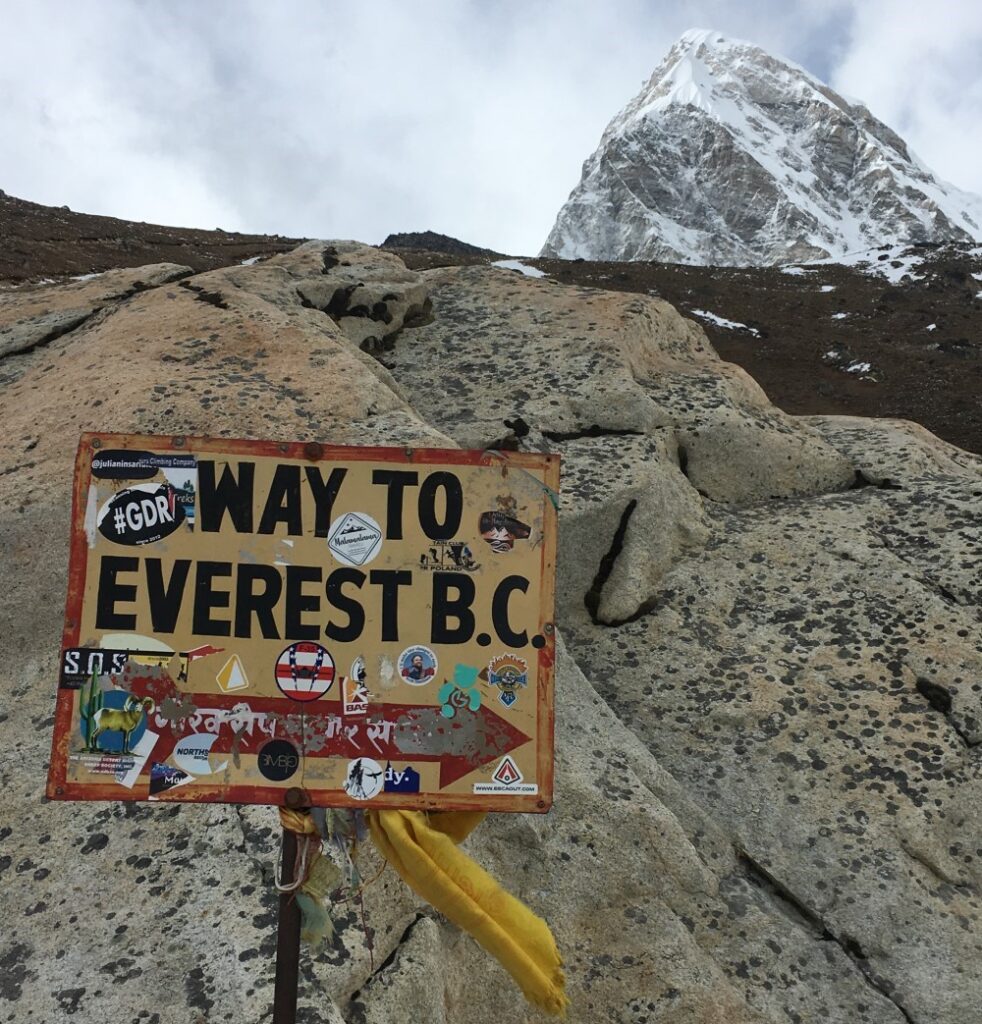

Everest Base Camp vs. Annapurna Circuit
3:8
9. Everest Base Camp or Annapurna Circuit: the summary.
If we look at the final score, the Annapurna Circuit is a clear winner if you plan your first trek in Nepal. Firstly, it is a slightly less physically demanding and less crowded route. Secondly, the landscape is more varied. Thirdly, it is easier to organize thanks to more transportation options. Lastly, its overall cost is lower despite more frequent opportunities of hot showers.
To learn even more about Annapurna Circuit trek go to “HOW IS THE ANNAPURNA CIRCUIT EXPERIENCE?”
Nevertheless, not all the factors taken into consideration will have the same importance for everyone. If you have dreamed of conquering the base camp of the highest mountain in the world from your early childhood, you shouldn’t think too much and just follow your heart. In fact, that’s exactly what happened to me. After a very detailed research and analysis that was leaning towards the Annapurna region, I decided to go to the Everest Base Camp in the end. When I returned to the Himalayas a year later, the choice was much easier…
In conclusion, the decision which trek to choose is not as important as it might seem right now. The Himalayas will most likely steal your heart forever during your first trek. In such case, you will come back to Nepal very quickly. Thus, it doesn’t really matter if you choose the Everest Base Camp or the Annapurna Circuit as you will end up doing both. 😉




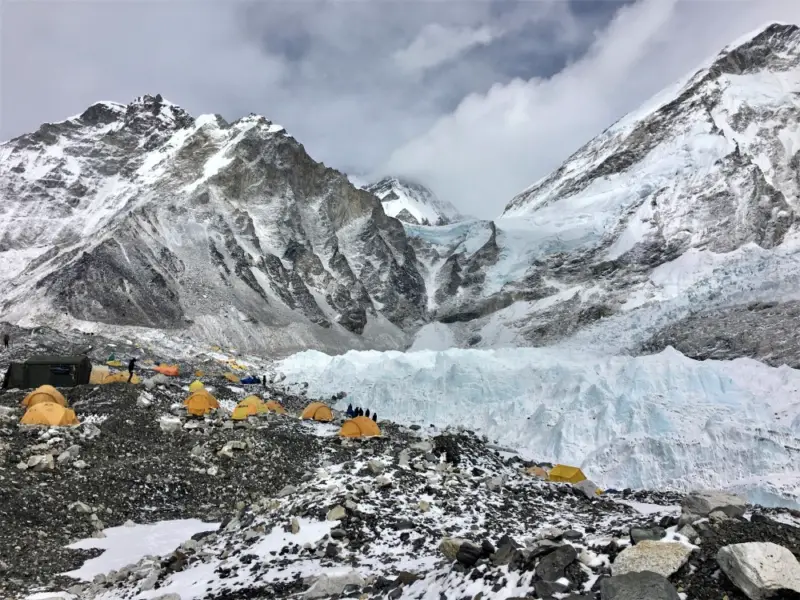








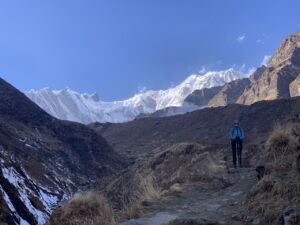
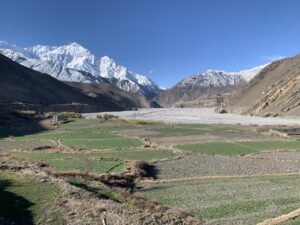
If you wish to due the proper/full Annapurna Circuit (Besisahar to Nayapul, via Ghorepani and Gandruk), without intervening transport (just your legs) then at least 20-22 days is more appropriate.
Sadly, there are deaths every year on the Annapurna circuit due to altitude — it is WORSE now that some people take transport quickly up to Manang.
Hi David! Thank you for your comment! I totally agree with you. It’s so sad (and dangerous) most of the people are in so much hurry while trekking in Nepal. My recommended itinerary is a bit shorter (from Besisahar/Ngadi to Nayapul), takes 19 days as it does not include Ghandruk. But of course, the more time the better – especially as Ghandruk is such a beautiful village. You can read about it here: https://betifulworld.com/annapurna-circuit-trek-day-by-day-itinerary/
Difficulty wise, I have to disagree.
1. Your argument that EBC being more susceptible to AMS is false. On the contrary, more days >4000m is actually more forgiving, giving more time to acclimatise and makes it even more unlikely to develop AMS as compared to ACT. E.g., if you’ve acclimatised to 4000m, you’re unlikely to develop AMS even if you were to stay at that altitude for another 7 days.
2. Largest elevation gain covered in any day on EBC is lower than that for ACT (seems to be only 850m from Phakding (2600m) to Namche (3450m), vs >900m from Thorong Phedi (4500m) to Thorong La Pass (5416m). This is not forgetting that the final day is immensely more torturous on ACT (distance, elevation, and proximity to closest town).
3. EBC is an “up and down” route, vastly more forgiving than the ACT which is an “up and around”. Turning around on ACT takes more days than it does to continue and finish it.
All in all, EBC is more forgiving as a route with what’s seemingly more of a slow, scenic trek as compared to ACT.
PS – have asked several people who have done both, with the consensus of EBC being a more forgiving/easier trek, unless you’re doing the 3 passes which is definitely more difficult than ACT.
Hi Daniel,
First of all, thank you for your valuable comments. What I share on the blog is entirely based on my experience, knowledge and what I think. I hope that this little knowledge that I have will help or inspire someone to trek through the beautiful Nepal. I always welcome everyone here with a different perspective, because I am aware that there are people with more knowledge and different experiences. Okay, so let’s talk 🙂
1. Your argument that EBC being more susceptible to AMS is false. On the contrary, more days >4000m is actually more forgiving, giving more time to acclimatise and makes it even more unlikely to develop AMS as compared to ACT. E.g., if you’ve acclimatised to 4000m, you’re unlikely to develop AMS even if you were to stay at that altitude for another 7 days.
Key phrase here “if you acclimatised to 4000 m”. I couldn’t agree with you more, but what if not? As for altitude sickness, if you feel good at 4000m, you will last 7 days at 4000m. But…
…when I talk about difficulties and safety, I don’t just mean altitude sickness. It’s just one of the factors. In general, each step over 4000m is more tiring than over 3000m, even with good acclimatisation. Living conditions tend to be more basic at higher altitudes. The nights are colder. So many people cannot sleep well. On the EBC route, you can’t get a jeep that easily. The location is more remote.
2. Largest elevation gain covered in any day on EBC is lower than that for ACT (seems to be only 850m from Phakding (2600m) to Namche (3450m), vs >900m from Thorong Phedi (4500m) to Thorong La Pass (5416m). This is not forgetting that the final day is immensely more torturous on ACT (distance, elevation, and proximity to closest town).
The key sentence here: “Largest elevation gain covered in any day on EBC is lower than that for ACT”. That’s not entirely true… If you fly to Lukla at 2,860m, acclimatisation can be much more difficult. At ACT you start walking, or at least you should go about 900-1700m. Of course, if you go to Chame or Manang by jeep, it’s a different situation, but then you’re not really doing ACT, you’re just crossing the pass. On the other hand, you probably shouldn’t fly to Lukla either, but start trekking at Jiri. This one is difficult. It really depends on what trekking scenario we are comparing. We probably need a beer to discuss and come to a conclusion.
I agree that crossing the pass is the killer. It is more difficult than any day on the EBC trek. Especially if you don’t climb Kala Patthar.
P.S. The people I met on ACT were mostly okay, while the people on EBC I made friends with didn’t complete it and suffered more from the altitude. So I really think it depends who you’re talking to. Also, I did the EBC trek before the ACT so I was less experienced which may make a slight difference. I also did the Kongma La pass, which of course I didn’t consider as part of the ECB trek, but maybe it affected my assessment a bit. Probably I can’t be 100% objective. On the other hand, being 100% is not possible. It all depends… This whole blog is very relative.
Thanks again for making me think! That’s always a good thing.